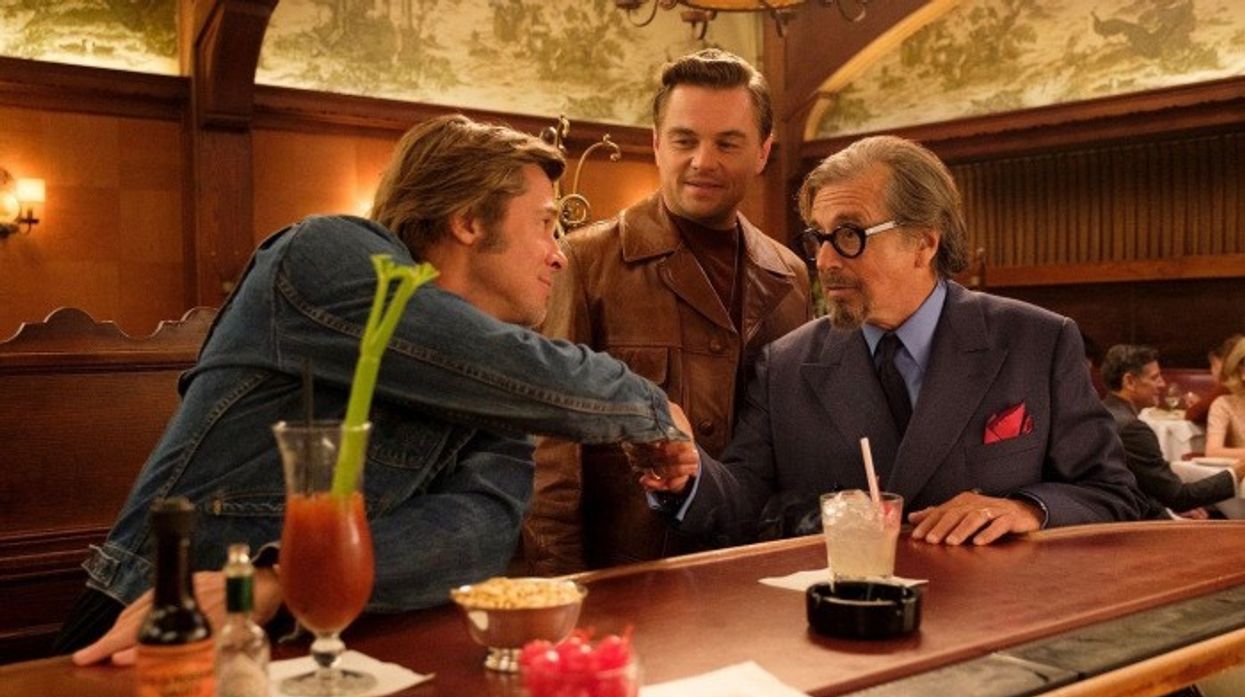Customizing Panavision's Anamorphic Lenses for 'Once Upon a Time in Hollywood'
A mix of decades-old anamorphic lenses, refitted by Panavision with a few new components, take us back to a 70s film vibe.

One thing you can say about director Quentin Tarantino...the 70s have never left him. Just about every film, including his epic western The Hateful Eight, has a 70s action vibe that really takes you back to that shining era nearly fifty years ago. So, for his latest movie Once Upon a Time in Hollywood, which takes place in 1969 L.A., there had to be an anamorphic look that only Panavision could pull off. But when using the current crop of 35mm film cameras, what actually needs to be done to make them fit? That's where Panavision's Senior Vice President of Optical Engineering, Dan Sasaki, comes in.
"I believe that is a large part of the equation. Re-optimization of lenses also allows a cinematographer the ability to fine-tune a lens to create a unique look that they can call their own."
Dan Sasaki has lived a lifetime with Panavision. His dad worked for the company when he was a kid, but little did he know that all those times dad brought him to work would lay out a path for his life's work: taking the vintage anamorphic lenses of decades past and breathing new life into them by a secret customization process that enables them to be used on modern film and video cameras.
Sasaki told Filmmaker Magazine:
"On occasion, I would be chaperoned through the company and get a gold ticket tour of the inner workings of Panavision. The excitement generated by those looks behind the curtain was priceless. Ironically, at the time, I did not think I would eventually work at Panavision or anything related to the motion picture industry."
As Senior Vice President of Optical Engineering, Sasaki has been instrumental in working with director of photography Robert Richardson to create that 70s widescreen look for Tarantino's Hollywood tale. To do that, Panavision has customized over ten different anamorphic lenses, designed in the 60s and 70s for 70mm widescreen epics, to work with modern 35mm Kodak Vision 3 film. And center amongst them are the C Series and eSeries anamorphic lenses, plus a few Ultra Golden Panatars that Richardson cut his cinematic teeth on back in the 90s, nearly thirty years ago.
But the problem with those vintage anamorphic lenses is that they weren't really designed for close-ups, rather, large vistas and epic widescreen shots. For Once Upon a Time in Hollywood, the close-up focus was a must for what Tarantino was wanting to achieve.
That's where Sasaki turns to the modern heir apparent, the recently released T Series of film lenses, which would be converted to be both faster and close focusing. The result was a look that complimented the C Series, rounding out the overall glass package. Sasaki says:
"The film compatibility conversion allowed Bob an artistic option to bend the lenses in a more vintage direction that complemented the C Series lenses and rounded out his lens package."
But to do that, they would have to adjust the spherical component of all the lenses to clear the distance of the T series' lenses with modern 35 mm film gates. The T Series is designed primarily for digital cameras, and as such, can fit deeper into the camera body to project light directly onto the sensor. Since film cameras have a spinning, mirrored gate, those lens elements would need to be compressed slightly in order to clear the gate, but without affecting the overall compression of the lens array, or the C Series style that they wanted to maintain. The process is called de-tuning and Panavision is very mum about how they accomplish this.
Sasaki also says that by using detuned anamorphic lenses to capture cinematic footage, the result is what he calls "a cleaner bridge" to the post-production side of things, another part of the filmmaking process that has undergone a digital evolution since those lenses were invented. But it makes the image easier to manipulate and keep consistent with the overall look the production is working to achieve in post. He adds:
"Attributes that can be relayed or created through a customized lens can be further complemented in post. The resulting combination image can create a large number of image attributes that cannot be achieved by a status quo optics/camera-only combination."
The result is that the Panavision collection of vintage anamorphic lenses that spans nearly five decades is bringing back into style a look that is both cinematic and epic in scope without having to break the bank on production value.
But even Panavision has its limits of how some of these lenses will be used on a production. Since they are so valuable, the C Series lenses are being heavily curated to curtain the frequency of their use in action scenes.
"Due to the value and uniqueness associated with C Series lenses, we have curtailed the frequency in which these lenses are put into situations that would potentially end up in a smashed lens."
Can't blame them there. We're talking cinematic history here. Which, if carefully managed, can be available for everyone for as long as those lenses are around.
Source: Filmmaker Magazine















